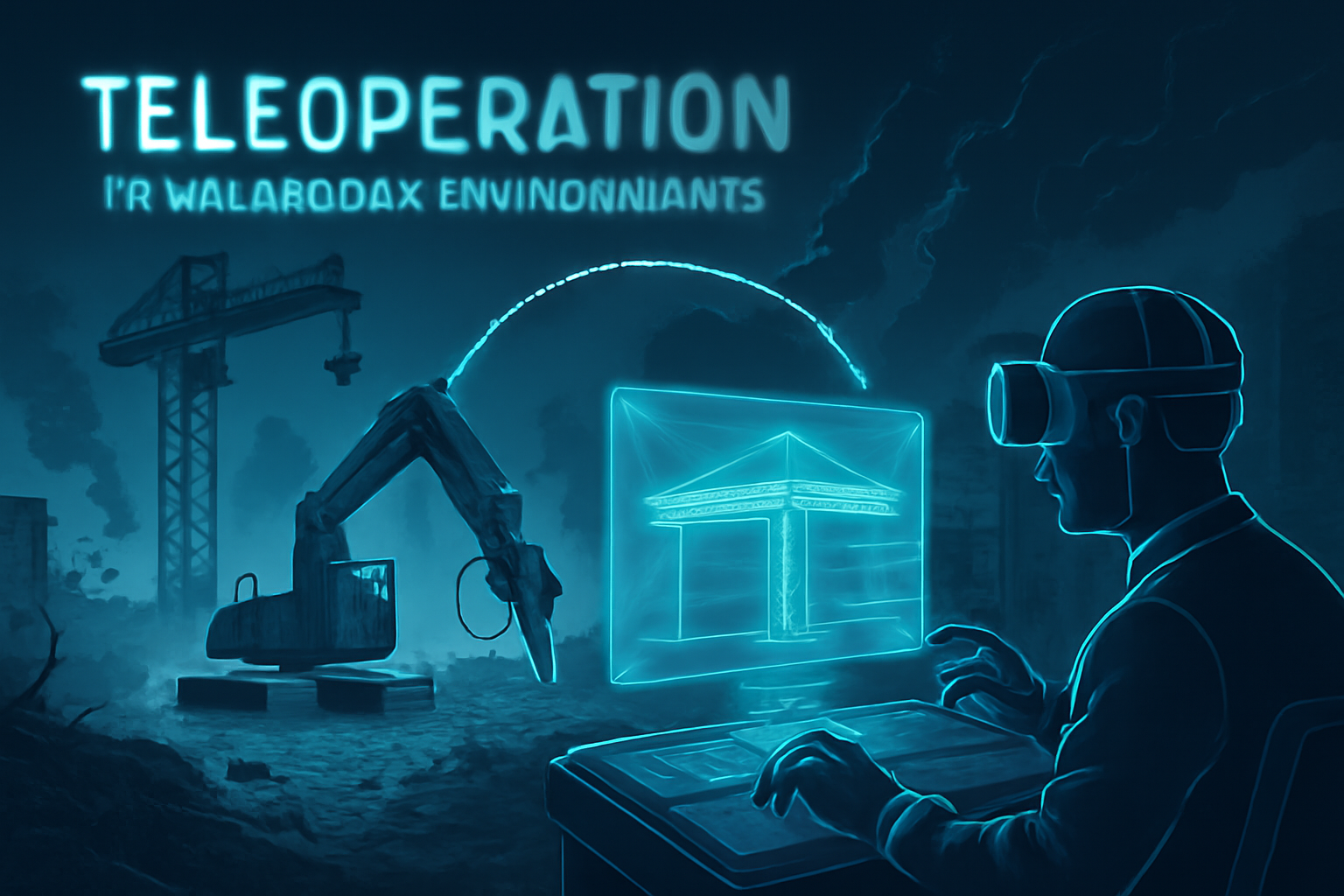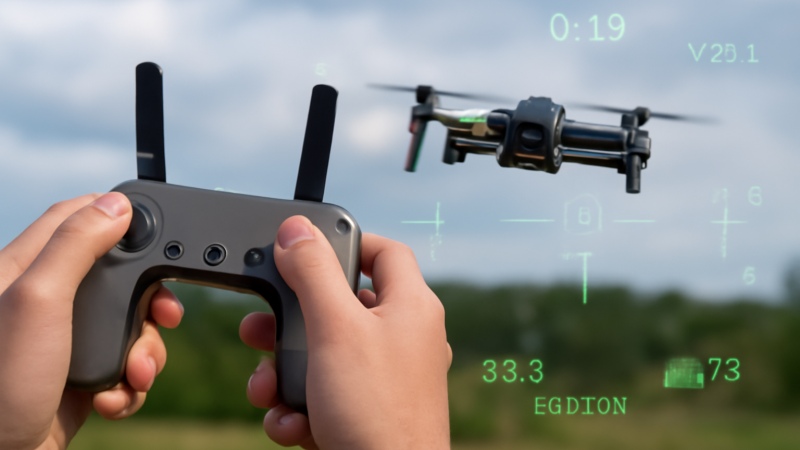Teleoperation in Hazardous Environments: A Comparative Study

Understanding Teleoperation
Definition and Concept
Teleoperation refers to the remote control of machines or systems from a distance, allowing operators to perform tasks without being physically present at the site of operation. It bridges human decision-making capabilities with machine execution through communication networks and control interfaces. This technology enables the manipulation of robotic arms, vehicles, drones, and other devices, making it possible to operate safely in environments that are dangerous or inaccessible to humans.
History and Evolution
The concept of teleoperation dates back to the mid-20th century, with early developments in space exploration and nuclear plant manipulation, where human operators controlled robotic devices remotely for safety. Over decades, advances in computing, communication, sensors, and robotics have propelled teleoperation from basic remote-controlled machines to sophisticated systems integrating artificial intelligence, low-latency communication, and immersive interfaces. This evolution has expanded teleoperation’s reach across industrial, military, and commercial sectors.
Key Components of Teleoperation
Low-Latency Communication
A critical element of effective teleoperation is ensuring communication with minimal delay (latency) between the operator’s commands and the machine’s response. Low latency is essential for precision control, especially in hazardous environments where any lag can jeopardize safety and task success. Technologies like 5G, fiber optics, and satellite communication are employed to achieve real-time or near-real-time data transmission.
Control Interfaces
Control interfaces serve as the medium between the human operator and the machine. These range from joysticks and control panels to advanced haptic devices providing tactile feedback. Effective interfaces aim for intuitive operation, reducing cognitive load and enabling precise manipulation even in complex scenarios.
Direct Command Interfaces
Direct command interfaces allow operators to issue specific instructions or automated commands to the system. These interfaces often include graphical user interfaces (GUIs), voice commands, or motion captures that translate operator intentions into accurate machine actions, facilitating smoother control and enhanced responsiveness.
Applications of Teleoperation
Hazardous Environments
Teleoperation is invaluable in environments posing significant risks to human health and safety, such as nuclear reactors, chemical plants, deep-sea explorations, and disaster zones. Robots controlled remotely can perform inspections, repairs, or data collection without exposing humans to dangers like radiation, toxic gases, or unstable structures.
Inspection and Maintenance
In industries including oil and gas, power generation, and manufacturing, teleoperated robots conduct routine and emergency inspections. These systems access confined or difficult-to-reach areas to identify faults or degradation, thereby minimizing downtime and reducing human labor in risky conditions.
Internal Transportation and Logistics
Warehousing and logistics sectors increasingly use teleoperation for moving goods within facilities. Remote-controlled vehicles and robotic forklifts navigate complex layouts, handling materials with precision, which can optimize workflow and reduce workplace injuries.
Remote Operations with Drones
Drones operated via teleoperation have revolutionized aerial inspection, surveying, and delivery services. From inspecting power lines to environmental monitoring, remotely piloted drones provide access to vast or hazardous areas without physical risk to operators.
Benefits of Teleoperation
Cost Savings
Teleoperation reduces the need for costly safety measures, protective equipment, and compensation for hazardous work environments. By enabling remote work, organizations can lower insurance premiums, reduce accident-related expenses, and achieve operational efficiencies.
Operational Reliability
Machines controlled via teleoperation can work in extreme conditions without fatigue or distraction issues typical of human operators. This reliability improves task consistency and reduces errors in critical operations like nuclear waste handling or disaster response.
Addressing Labor Shortages
Industries facing skilled labor shortages benefit from teleoperation by allowing a fewer number of highly trained operators to manage multiple remote systems, optimizing available talent and maintaining productivity.
Advanced Technologies in Teleoperation
Gesture Recognition
Gesture recognition enhances teleoperation by translating natural human movements into control commands. This technology provides an intuitive user experience, enabling operators to manipulate devices more fluidly and accurately, especially in complex tasks requiring manual dexterity.
Autonomous Systems Integration
Combining teleoperation with autonomous capabilities allows machines to perform routine tasks independently while operators intervene only in critical or unforeseen situations. This hybrid approach reduces operator workload and improves operational efficiency.
Sensory Manipulation Innovations
Innovations in sensory feedback, including haptic and force feedback systems, offer operators real-time tactile sensations. These sensations enhance situational awareness and precision, critical in delicate operations such as remote surgery or fine mechanical repairs in hazardous zones.
Imitation Learning
Imitation learning uses artificial intelligence to teach robotic systems by observing human demonstrations. This technology aids in refining teleoperation by enabling machines to replicate complex tasks, providing smoother transitions between operator commands and autonomous execution.
Impact and Importance of Teleoperation
Defense Sector
Teleoperation has transformed military capabilities by enabling bomb disposal, reconnaissance, and combat missions without risking soldier lives. The technology enhances battlefield safety and operational effectiveness under extreme conditions.
Commercial Use Cases
From agriculture to mining, teleoperation enables remote control of equipment in large or dangerous areas. This increases productivity while ensuring operator safety and complying with stringent regulatory requirements.
Industrial Applications
In manufacturing, teleoperated robotic arms, and machinery perform high-precision assembly, welding, and material handling remotely. This not only protects workers from injuries but also ensures high-quality standards and continuous operations.
Challenges and Limitations
Communication Latency Issues
Despite advances, latency remains a challenge, especially in remote or bandwidth-limited locations. Delays can impair real-time control, jeopardizing safety and task accuracy. Solutions include improved network infrastructure and predictive control algorithms, but these require substantial investment.
Technical Complexities
Teleoperation systems demand sophisticated hardware and software integration, including stable communication links, precise sensors, and reliable control mechanisms. Maintaining these systems and training operators pose logistical and financial hurdles.
Safety Concerns
While teleoperation reduces direct human exposure to hazards, malfunctions, cyber-attacks, or operator errors can cause accidents. Robust safety protocols, fail-safes, and cybersecurity measures are essential to mitigate these risks.
Teleoperation in hazardous environments offers groundbreaking advantages by allowing safe, efficient, and precise remote operations where human presence is limited or impossible. With ongoing technological advancements and expanding applications across defense, industrial, and commercial sectors, teleoperation is redefining how we approach dangerous and complex tasks. However, addressing communication latency, system complexity, and safety remains crucial to fully harnessing its potential.






